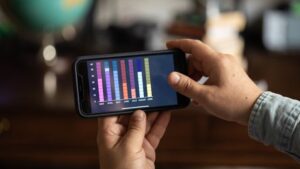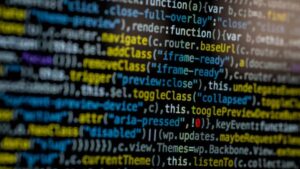Introduction
Are you considering studying programming to improve your data analysis, machine learning, and statistical computing skills? Look no further than learn R programming. R is a strong open-source programming language that is frequently used by data scientists, analysts, and academics. Whether you’re a novice or an established expert, studying R may help you advance your career and problem-solving skills.
In this blog, we’ll look at seven compelling reasons to learn R programming and how mastering it may lead to new prospects in the field of data research and analysis.
7 Powerful Reasons to Learn R Programming Today
1. Dominance in Data Science & Statistical Computing
R is a highly popular programming language for data research and statistical analysis. Many businesses and academic institutes rely on R for data visualisation, statistical modelling, and predictive analytics.
2. An extensive library of packages
R has approximately 18,000 packages available on CRAN (Comprehensive R Archive Network), spanning a wide variety of functions from data manipulation to machine learning.
3. Easy Data Visualisation & Reporting
One of R’s most notable capabilities is its ability to generate high-quality visualisations. ggplot2 and plotly make it simple to create interactive graphs, charts, and dashboards.
4. A highly sought-after skill in the job market
Many sectors rely on data-driven decision-making, therefore R is an important ability for job advancement. Top organisations like Google, Facebook, and Microsoft utilise R for data analysis and modelling.
5. Open-Source & Community-Driven
R is fully free to use and has a large global community of developers, statisticians, and data aficionados that help it expand.
6. Efficient integration with other technologies
R interfaces well with Python, SQL, Hadoop, and other big data technologies, making it ideal for large-scale data processing and analytics.
7. Great for Academia & Research
R’s robust statistical skills make it popular in education, research, and scientific investigations. Universities and institutions use R for data analysis, hypothesis testing, and predictive modelling.
Conclusion
Anyone interested in data science, analytics, or research can benefit greatly from learning R programming. R continues to be a popular choice for professionals throughout the world due to its robust statistical capabilities, broad package ecosystem, and expanding employment demand.
Whether you’re a student, researcher, or industry professional, now is the time to learn R programming and take advantage of the unlimited opportunities it provides.
Frequently Asked Questions
R has a large library of packages and built-in statistical functions, making complicated data analysis and modelling simple.
Some of the most powerful R programs are:
- ggplot2, which provides outstanding data visualisation.
- dplyr allows for efficient data manipulation.
- caret stands for machine learning.
- Shiny is for interactive web apps.
Yes! R Markdown and Shiny help you produce professional, interactive reports and dashboards that can be shared online.
Learning R creates openings for careers such as:
- Data scientist
- Data analyst
- Business intelligence analyst
- Machine learning engineer
There are several online forums, tutorials, and courses accessible, including R’s official documentation, Stack Overflow, and the R community on GitHub.
Yes! Many data professionals combine R and Python for various tasks, taking use of each language’s capabilities.
Absolutely! Many scholars use R to publish articles, analyse databases, and perform experiments in subjects such as economics, biology, and medicine.







